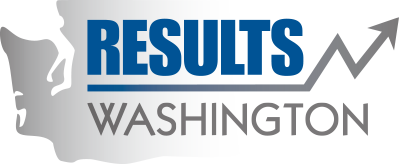Archived: Contaminated sites cleaned
The citizens of the State of Washington put together a referendum to create a cleanup law in this state. The law (Model Toxics Control Act) begins with these words: " Each person has a fundamental and inalienable right to a healthful environment, and each person has a responsibility to preserve and enhance that right. The beneficial stewardship of the land, air, and waters of the state is a solemn obligation of the present generation for the benefit of future generations."
Great progress has been made in cleaning up contaminated sites in our state. But there is a long road ahead. Washington has over 11,700 contaminated sites; cleanup actions have been completed at just over half of them.
The majority of these sites are contaminated by petroleum and petroleum-related products. Other contaminants include metals (such as lead and mercury) and pesticides (such as lead and arsenic). Other frequently found substances include solvents, dioxins, and PCBs.
Cleanups are required when contaminants are at levels that are not safe for human health and the environment. Examples include contamination in drinking water supplies, in neighborhood soils (including school yards and daycare facilities), and in sediments that make shellfish unsafe to eat and beaches unsafe to enjoy. The cleanup of contaminated sites protects human health and the environment by preventing, reducing, or eliminating exposure to and risks caused by toxic contamination.
In addition, cleaning up contaminated lands contributes to our quality of life by supporting the development of environmentally and economically sustainable communities. For example, cleaning up contaminated sites allowed for the redevelopment of the Thea Foss Waterway in Tacoma. The cleanup of multiple former industrial areas opened the door for the City of Tacoma to bring in the Glass Museum, living and recreational areas, and several non-polluting businesses that have attracted new life and vibrancy into the City’s downtown corridor.
Since the late 1980s, Ecology has overseen the cleanup of nearly 6,000 sites. Many of these cleanups have been accomplished through the Remedial Action Grant program. This program provides matched funding to local governments to clean up their contaminated sites. These cleanups are “formal” cleanups. Formal cleanups typically have legal agreements in place that set schedules and address liability.
A Voluntary Cleanup Program (which contributes to the majority of completed cleanups) also continues to be strong and vital for economic development around the state. Voluntary cleanups are ones in which a party can independently clean up their contaminated site and then for a fee, request services from Ecology to ensure the cleanup is complete.
Most voluntary cleanups are driven by property transactions. For example, work at Voluntary Cleanup Program sites in Seattle’s South Lake Union area is clearing the way for new jobs and for commercial and residential space.
The number of completed cleanups has decreased slightly during the recession, as did sites that have been reported or came in voluntarily. Those completed cleanups are beginning to increase again. In 2015, a record of 401 new sites was reported to the program. The vast majority of cleaned up sites and newly reported sites are done so voluntary.
Ecology has several initiatives underway to reach and continuously improve the process and speed of cleanups. Several improvements related to the 2012 Lean Event include:
- Training Cleanup Site Managers on several new tools to keep cleanups moving more quickly. In addition to a new on-line tool kit, webinars for staff help to facilitate learning and consistency across the state.
- Meetings at the launch of a cleanup and throughout the cleanup process have increased to ensure everyone understands the process and to ensure a vision of the end result is clear in everyone’s mind. Checklists have been developed to guide site owners and Ecology staff throughout the cleanup process.
- Ecology is initially focused on publicly funded sites. These new tools will ultimately affect all cleanup work throughout the state.
- The 2013 Legislature passed Second Engrossed Second Substitute Senate Bill 5296, which amended the Model Toxics Control Act. Several new requirements from that bill are being implemented or developed.
- Model remedies to help make cleanups faster and less expensive.
- New reporting requirements to increase transparency.
- Creation of Redevelopment Opportunity Zones
Become informed about cleanup activities by visiting at: http://www.ecy.wa.gov/cleanup.html.
Current site cleanup information can be found at: http://www.ecy.wa.gov/programs/tcp/pub_inv/pub_inv2.html.
